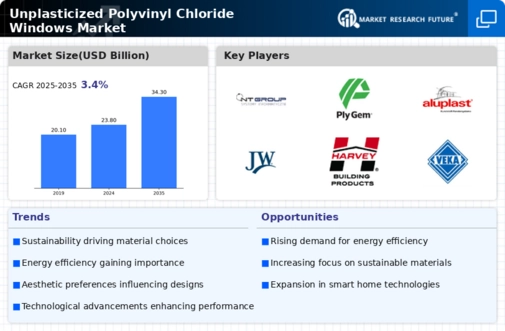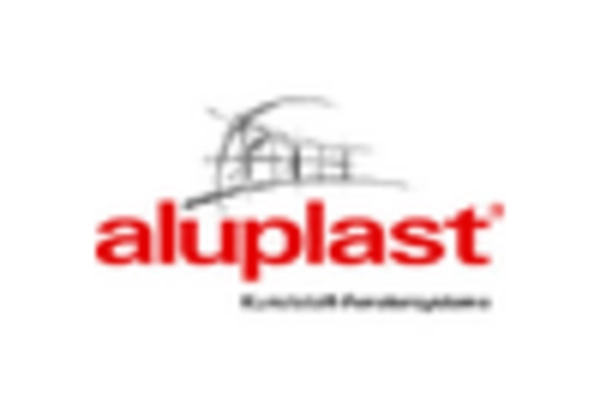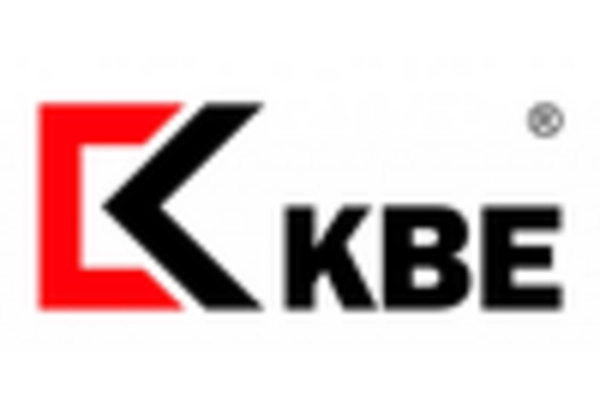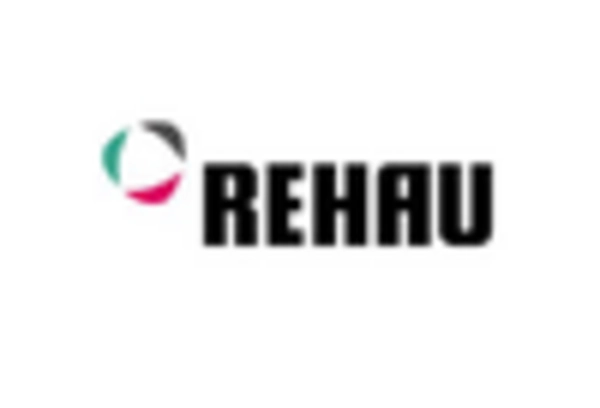The Unplasticized Polyvinyl Chloride (uPVC) Windows Market is currently characterized by a dynamic competitive landscape, driven by increasing demand for energy-efficient and sustainable building materials. Key players such as Deceuninck (BE), Rehau (DE), and Veka (DE) are at the forefront, each adopting distinct strategies to enhance their market positioning. Deceuninck (BE) emphasizes innovation in product design and sustainability, focusing on eco-friendly materials and processes. Rehau (DE) has been actively pursuing regional expansion, particularly in emerging markets, while Veka (DE) is leveraging digital transformation to optimize its operations and customer engagement. Collectively, these strategies contribute to a competitive environment that is increasingly focused on sustainability and technological advancement.
In terms of business tactics, companies are localizing manufacturing to reduce costs and improve supply chain efficiency. This approach is particularly relevant in a moderately fragmented market where several players vie for market share. The collective influence of these key players shapes a competitive structure that encourages innovation and responsiveness to market demands, thereby enhancing overall market dynamics.
In August 2025, Rehau (DE) announced the opening of a new manufacturing facility in Eastern Europe, aimed at increasing production capacity and reducing lead times for customers in the region. This strategic move is likely to bolster Rehau's competitive edge by enhancing its ability to meet local demand swiftly, thereby improving customer satisfaction and loyalty. The facility is expected to utilize advanced manufacturing technologies, aligning with the company's commitment to sustainability and efficiency.
In September 2025, Veka (DE) launched a new line of energy-efficient uPVC windows designed to meet the latest environmental standards. This product line not only reflects Veka's dedication to innovation but also positions the company favorably in a market increasingly driven by regulatory requirements for energy efficiency. The introduction of these windows is anticipated to attract environmentally conscious consumers and builders, further solidifying Veka's market presence.
In July 2025, Deceuninck (BE) entered into a strategic partnership with a leading technology firm to integrate artificial intelligence into its manufacturing processes. This collaboration aims to enhance production efficiency and reduce waste, aligning with the growing trend of digitalization in the industry. By adopting AI technologies, Deceuninck is likely to improve its operational capabilities, thereby gaining a competitive advantage in a market that increasingly values technological integration.
As of October 2025, the Unplasticized Polyvinyl Chloride Windows Market is witnessing significant trends such as digitalization, sustainability, and the integration of artificial intelligence. Strategic alliances are becoming increasingly important, as companies seek to leverage complementary strengths to enhance their competitive positioning. Looking ahead, it appears that competitive differentiation will evolve from traditional price-based competition to a focus on innovation, technology, and supply chain reliability, suggesting a transformative shift in how companies engage with the market.

















Leave a Comment